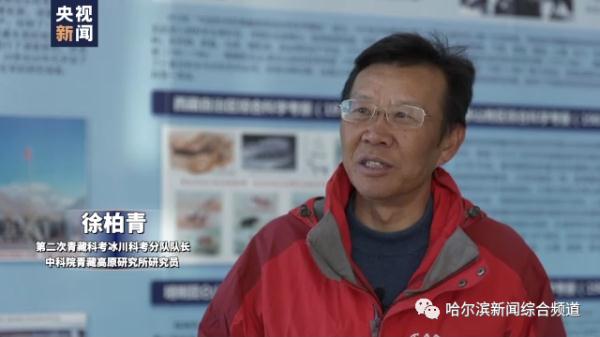The Nu River is one of the greatest rivers in southwest China, with a total length of 3,240 kilometers, of which 2,013 kilometers are in China, flowing from Tibet through Yunnan, flowing into Myanmar, and finally into the Andaman Sea in the Indian Ocean.
For the Bujiagangri glacier expedition at the source of the Nu River, it was difficult to carry out in the past due to climbing conditions, and this time scientists used helicopters to transport scientific expedition materials and personnel, which solved the problem. So how Chinese scientists successfully drilled ice cores in the glacier at the source of the Nu River for the first time, look at the records.
On October 13, 2021, the scientific expedition helicopter took off for the first time from the base camp at the foot of the Bugagangri Glacier at the source of the Nu River, with an altitude of 4200 meters above sea level and an ice core drilling point of more than 6200 meters.
Along the way, we can see the pre-ice lake, ice Tallinn, ice fissures, and a very shocking complete glacier picture. Due to the difficulty of climbing the mountain, no one has climbed this mountain in the past, let alone carried out scientific research.

Xu Baiqing, leader of the glacier expedition detachment of the Second Qinghai-Tibet Scientific Expedition and researcher of the Institute of Tibetan Plateau Research of the Chinese Academy of Sciences: Buga Gangri is in the middle of the eastern part of the Qinghai-Tibet Plateau. For a long time, our means have not been able, and people cannot go up. There are many ice cliffs and ice waterfall areas in this place. Now, with the help of the second scientific expedition, we have the advanced means of helicopters, which can transport people and supplies directly to the ice, which actually fills a gap in the recovery of monsoon evolution from south to north.
Even with helicopters, it is very difficult, because the wind at the top of the mountain sometimes reaches level 8 or 9, and it is difficult to drill the camp at more than 6200 meters of ice cores, load and unload supplies. Half an hour later, the helicopter arrived at the camp.
This yellow tent is the ice core drilling point, which is built on a 1.5-meter-deep snow pit to protect it from the wind. From October 16, when the first drill was played, on October 22, a scientific expedition team composed of 28 expedition members successfully drilled an 80-meter-long, 82-mm diameter through-top ice core, that is, the mechanical drill finally touched the rock formation. By the end of November, the expedition had drilled a total of four ice cores and the helicopter had flown 58 times.
Xu Baiqing: In total, we drilled 4 ice cores, two of which were 80 meters through the bottom, and two of which hit the water layer, about 35 meters. In this case, the total amount of ice cores is about 230 meters.
The Qinghai-Tibet Plateau is the roof of the world, the water tower of Asia, the third pole of the earth, and an important ecological security barrier in China. China officially launched the second Qinghai-Tibet scientific expedition on August 19, 2017, focusing on water, ecology and human activities. Through ten major tasks, it will reveal the mechanism of environmental change on the Qinghai-Tibet Plateau, optimize the ecological security barrier system, promote the sustainable development of the Qinghai-Tibet Plateau and promote the construction of national ecological civilization.
Drilling the ice core at the source of the Nu River is an important component of the ten major tasks of "the synergy of westerly winds and monsoons and their influences and the dynamic changes and influences of Asian water towers".
Xu Baiqing: The main thing is to restore how the monsoons of different time scales evolve, how the westerly winds evolve, and how the two interact. It is the core task to restore and discover some laws, cycles and their impact on the ecosystem and environmental evolution of the Qinghai-Tibet Plateau from different time scales. The ultimate goal is to solve the problem of the mechanism of environmental change on the Qinghai-Tibet Plateau.
Source: CCTV News